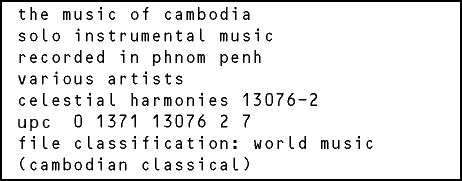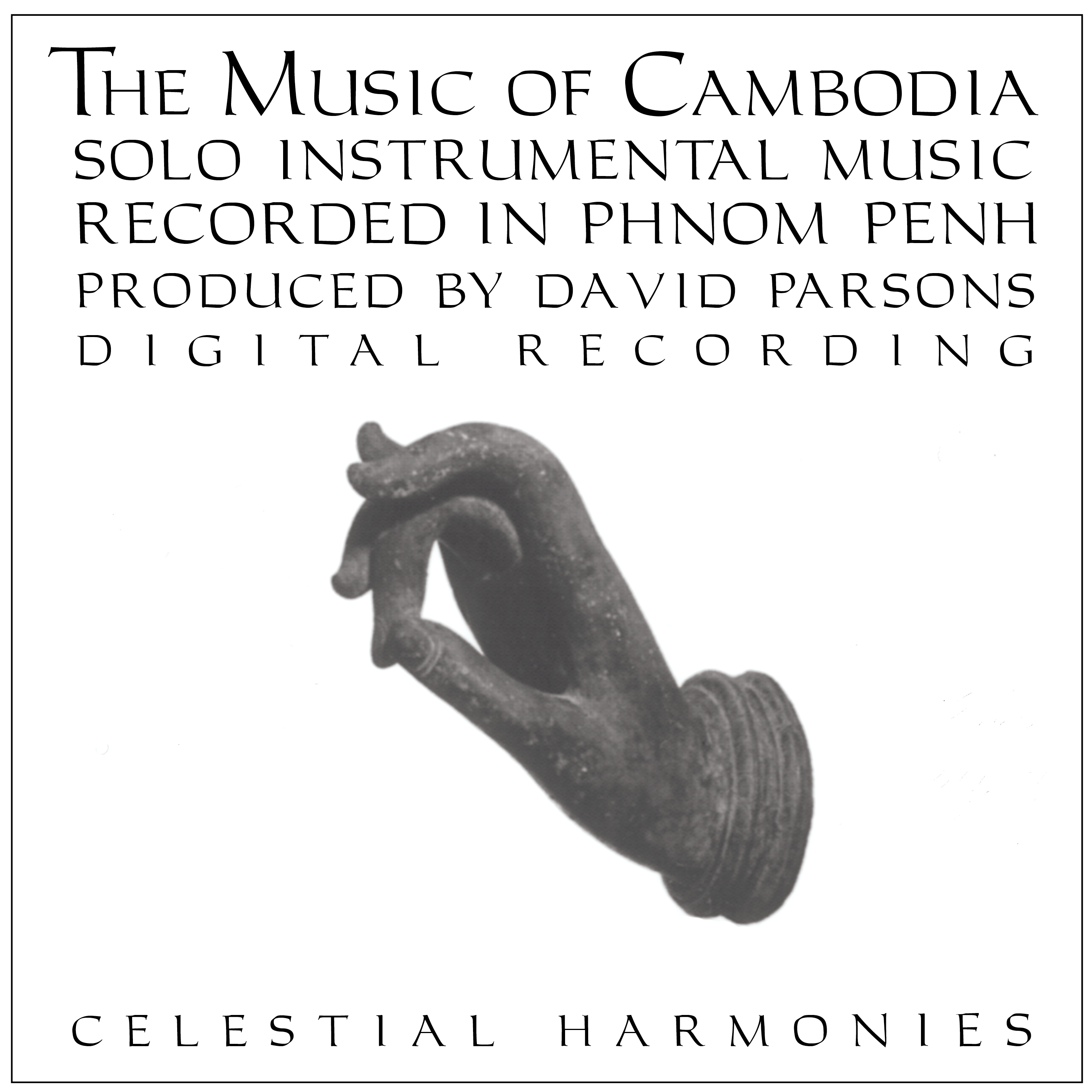 |
||||||||||||||||||||||||||||||||||||||||||
 
the projectThe third volume of The Music of Cambodia completes
a musical document trilogy, bringing to Western audiences for the
first time the sounds that the ancient rulers of the Khmer Empire
might have heard. After presenting the rare instrumental and musical
traditions of the Angkor Wat region in The Music of Cambodia,
Volume 1 (13074) and the music of
the Royal Court in The Music of Cambodia, Volume 2
(13075-2), producer David Parsons returned
to Phnom Penh to record solo performances by some of the finest living
musicians in Cambodia. While the first two releases in this series
focused on the surprising vitality and high standards of ensemble
playing in traditional Khmer music, this volume gives the individual
musicians a chance to show off their virtuosity and the range of colors
available on their instruments.
The solo instrumental music heard in The Music of Cambodia, Volume 3 includes examples of most of the major wind instruments and several string instruments, both plucked and bowed. In fact, both the oldest and rarest instruments still prominent in Cambodia are represented here. Although many of these solo performances have a courtly air to them and might remind listeners of the court music of China or Japan, in fact, most of them were originally associated with weddings or ritual healing ceremonies. Some are actually quite buoyant while others are more contemplative. Three of the songs are from one of the wandering minstrels who are so popular throughout Cambodia. All present Western listeners with a rare opportunity to hear echoes of music from ten centuries ago, in a setting that is as accessible as it is exotic. the artistsYeum Sang is considered the finest wind virtuoso in
Cambodia today. He plays no fewer than five instruments on this recording:
two traditional Khmer reeds, two different Khmer oboes, including
the nearly extinct sralai thom, and the Khmer flute.
Prach Chhuon appears on The Music of Cambodia, Volume 3 as both singer and player of the Khmer lute. He is the most popular folk singer in the country; his style of song, involving satirical, often improvised lyrics about daily life and current events, is distant cousin to the medieval troubadour and to the folk singers of the American West. Sok Duch and Yon Khien are fiddlers who appear with the royal pinpeat and mahori ensembles of the royal court on the second volume of this series; both are respected soloists. Khan Heuan is the last surviving virtuoso of the kse diev, a strangely built string instrument that uses the player's chest as a resonator. With its almost percussive sound, the kse diev provides some of this volume's most striking moments. tracklist
|
||||||||||||||||||||||||||||||||||||||||||
|
|
||||||||||||||||||||||||||||||||||||||||||
 |


